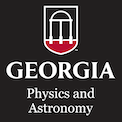The future of engineering is in the small. The past decade has shown numerous advances in manufacturing science that bring lab-on-a-chip applications closer to reality. How can we control the motion of droplets cheaply, easily and robustly? As a biologist and an engineer, the speaker presents experiments demonstrating how insects manipulate fluid surfaces to their advantage. Social insects (fireants) link their bodies to together to weave hydrophobic surfaces in order to keep their colonies dry in rainstorms and floods. On dry surfaces, they excrete oily drops from their feet to scale smooth surfaces. Other insects, such as water striders, have evolved such mastery of surface tension that they can live atop water surfaces indefinitely. We use basic principles (energetics, Cassie and Wenzel laws) to provide a
unified view of capillarity in the insect world. Particular attention is paid to rationalizing insect waterrepellency in terms of passive surface properties and active behaviors. Applications of our work towards building small-scale machines are also discussed.
Events Calendar View
-
NanoSEC Seminar
Dec 3, 2010
Biological micro-fluidics: lessons from insects
-
NanoSEC Seminar
Jan 5, 2011
Hybrid Nanomaterials for Chemical and Biological Sensing
Hybrid nanomaterials comprising nanoparticles (NPs) distributing on the surfaces of carbon nanotubes (CNTs) or graphene/graphene oxide (GO) represent a new class of materials. These materials could potentially display not only the unique properties of NPs and those of CNTs/graphene/GO, but also additional novel properties due to the interaction (e.g., electronic) between the NP and the CNT/graphene/GO. Such hybrid nanostructures are promising for various innovative technological applications, including chemical sensors, biosensors, water treatment, nanoelectronics, photovoltaic cells, fuel cells, and lithium ion batteries. This talk will introduce a material-independent, dry route based on the electrostatic force directed assembly (ESFDA) to assemble both aerosol and colloidal NPs onto CNTs/GO to form NP-CNT/GO hybrid structures. The areal density and the size distribution of NPs onthe CNT/GO can be controlled. Moreover, the non-covalent attachment of NPs preserves the intrinsic properties of CNTs/GO. Due to the inherent material-independence nature of the electrostatic force, various compositions of such NP-CNT/GO hybrids can be produced using this technique. Applications of such hybrid nanomaterials will also be presented for the detection of chemical and biological species. Through the combination of high-performance CNTs/GO and NPs of popular sensing materials, hybrid nanostructures exhibit high sensitivity to low-concentration chemical and biological species at room temperature. For instance, hybrid SnO2 NP-CNT platform allows for the room-temperature sensing of various gases, including those (CO and H2) known to be undetectable by either CNTs or SnO2 NPs alone at room temperature. Such superior sensing performance is attributed to the effective electronic transfer between NPs and the CNT, which facilitates the detection of gases through the change in the electrical conductivity of the hybrid nanostructure. Similarly, a specific biosensing platform based on Au NP and thermally-reduced GO (TRGO) has been demonstrated to successfully detect protein binding events (IgG to anti-IgG). The lower detection limit of the biosensor is on the order of 0.1 ng/ml (~1 pM) and could be further improved by optimizing the device structure. This performance is among the best of all carbon nanomaterial (e.g., CNT, graphene, GO)-based protein sensors.
-
Departmental Colloquium
Jan 13, 2011
Ultraviolet Photoemission Study of Graphene Crystalline Quality
Ultraviolet photoemission spectroscopy is used to investigate the growth of epitaxial graphene layers grown by the thermal decomposition of the Si face of 4H SiC (0001). We find that thinner layers of grown material have more pronounced spectral features in the valence band structure of the material. This result is indicative of a higher ordered surface structure and material quality compared to thicker layers.
-
CSP Lunch Seminar
Jan 18, 2011
Simulation evidence for non-local interface models: two correlation lengths describe complete wetting
-
Departmental Colloquium
Jan 20, 2011
From Asteroids to Planets: New Ideas about the Formation of the Solar System
Using light curve data, one can establish the rotation rate of asteroids—all that’s needed is differential photometry of the asteroid, over one night or several nights. Combining that data with light curves over several apparitions, over several years, and at different phase angles, one can establish the shape and orientation of that “minor planet.” Usually, the triaxial ellipsoid model of an asteroid provides a light curve with two peaks, when the asteroid is broadside to the viewer, and two minima, when the asteroid may be pole on. Of course, there are several variations of this theme, especially if the asteroid has “spots”—producing a similar feature once per complete cycle—or satellites—producing more abrupt decreases as the satellite occults the primary. Variations in orientation, cratering, shadowing, and composition modify the light curve details.
The study of asteroid rotation rates is part of a survey to monitor the spectra of primitive asteroids, C class and subtypes, to search for evidence of water of hydration—or aqueous alteration—and to search for evidence of spectral variations within the rotation cycle. Rotation rate, orientation and aspect ratios would be needed. Typically, C class asteroids lie within the middle to outer part of the main belt, with the more highly altered or even differentiated, asteroid classes S, M and E, occurring closer to the Sun. This convenient and somewhat logical variation may, instead, be a part of complex migration of planets during the formation of the solar system that scatters asteroids both inward and outward from the Jupiter area. Thus, the study of rotation rates correlated with spectra of asteroids may lead to further evidence for the complexity of solar system formation. -
CSP Lunch Seminar
Jan 25, 2011
New Atomic Data for Neutron-Capture Elements and Applications to Abundance Determinations in Ionized Nebulae
Page 16 of 121, showing 6 records out of 723 total, starting on record 91, ending on 96


